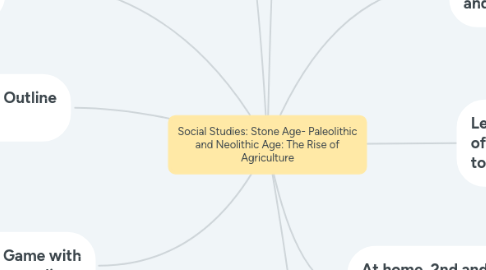Social Studies: Stone Age- Paleolithic and Neolithic Age: The Rise of Agriculture
by Seidi Valencia

1. In-class Reading about Paleolithic Age and Neolithic Age
1.1. Synchronous
2. Creating a Study Guide/ Outline for the Stone Age
2.1. Synchronous if working on it in class
2.2. Asynchronous if the outline is not complete and need to work on it at home
3. Interactive Online Game with questions about the reading
3.1. Synchronous: In class all together
3.2. Asynchronous: if this is done outside of class time
4. Working in small groups and completing a graphic organizer outlining the differences between Paleolithic and Neolithic Age
4.1. Synchronous
5. Synchronous
5.1. Learning together at the same time. This is considered to be during in-class instruction. This can be in the form of small group instruction, whole class instruction, working in small groups, working in pairs, working independently while with others in the class. Students and teachers can receive immediate feedback and address any misconceptions, answer questions, reteach or move forward with the lesson
6. Class discussion on the differences between Paleolithic and Neolithic Age
6.1. Synchronous
7. Learning together about the Rise of Agriculture and its importance to human history
7.1. Synchronous
8. At home, 2nd and 3rd time reading about Stone Age for homework
8.1. Synchronous
9. Asynchronous
9.1. Learning not together with others. This is considered to be independent work time without others. This can be in the form of watching prerecorded instructional videos, working on assignments, This work can be done at their own pace, at their own time. Feedback can be given depending on the platform used. There is a delay in receiving immediate answers to questions, or asking clarifying questions.


